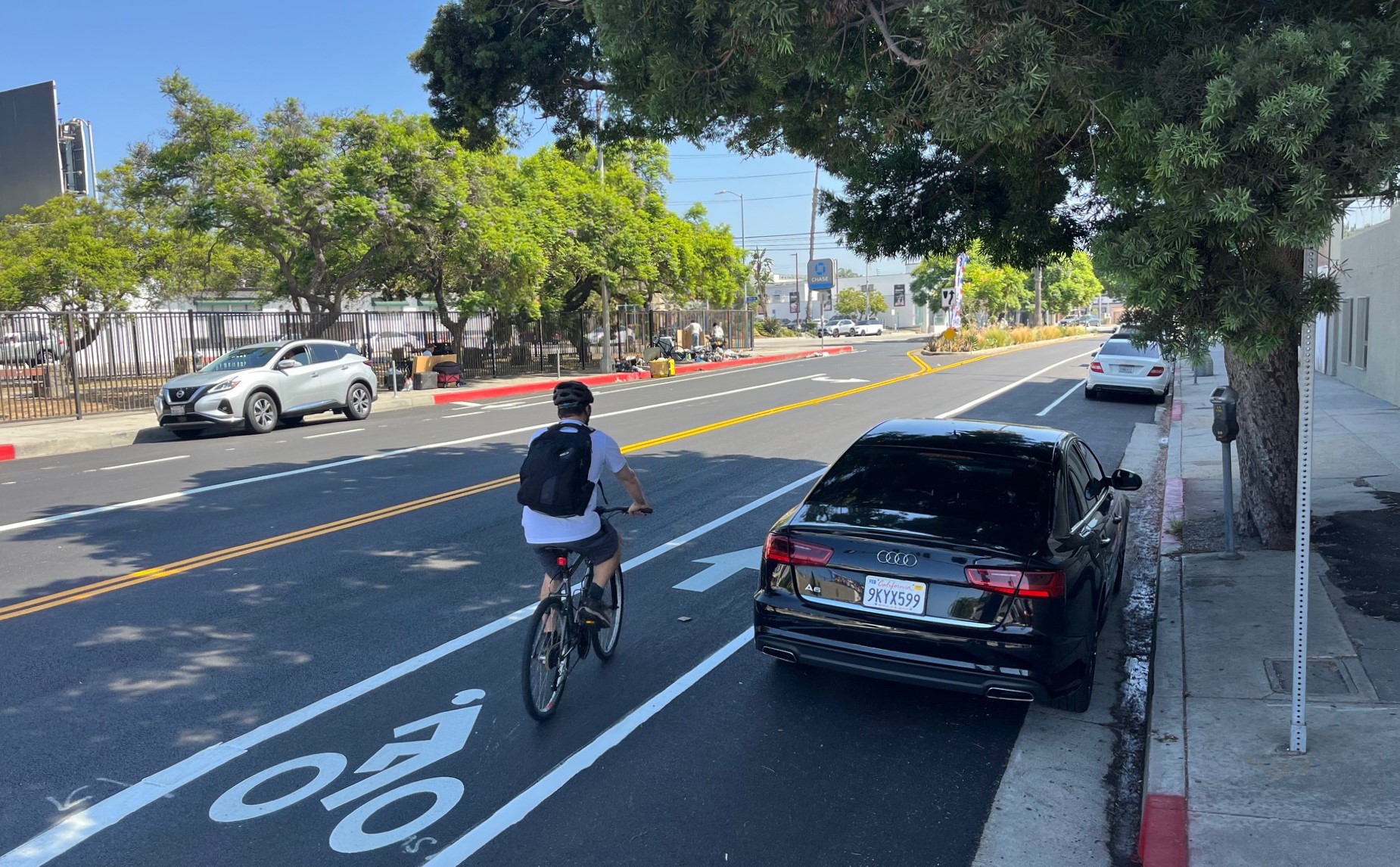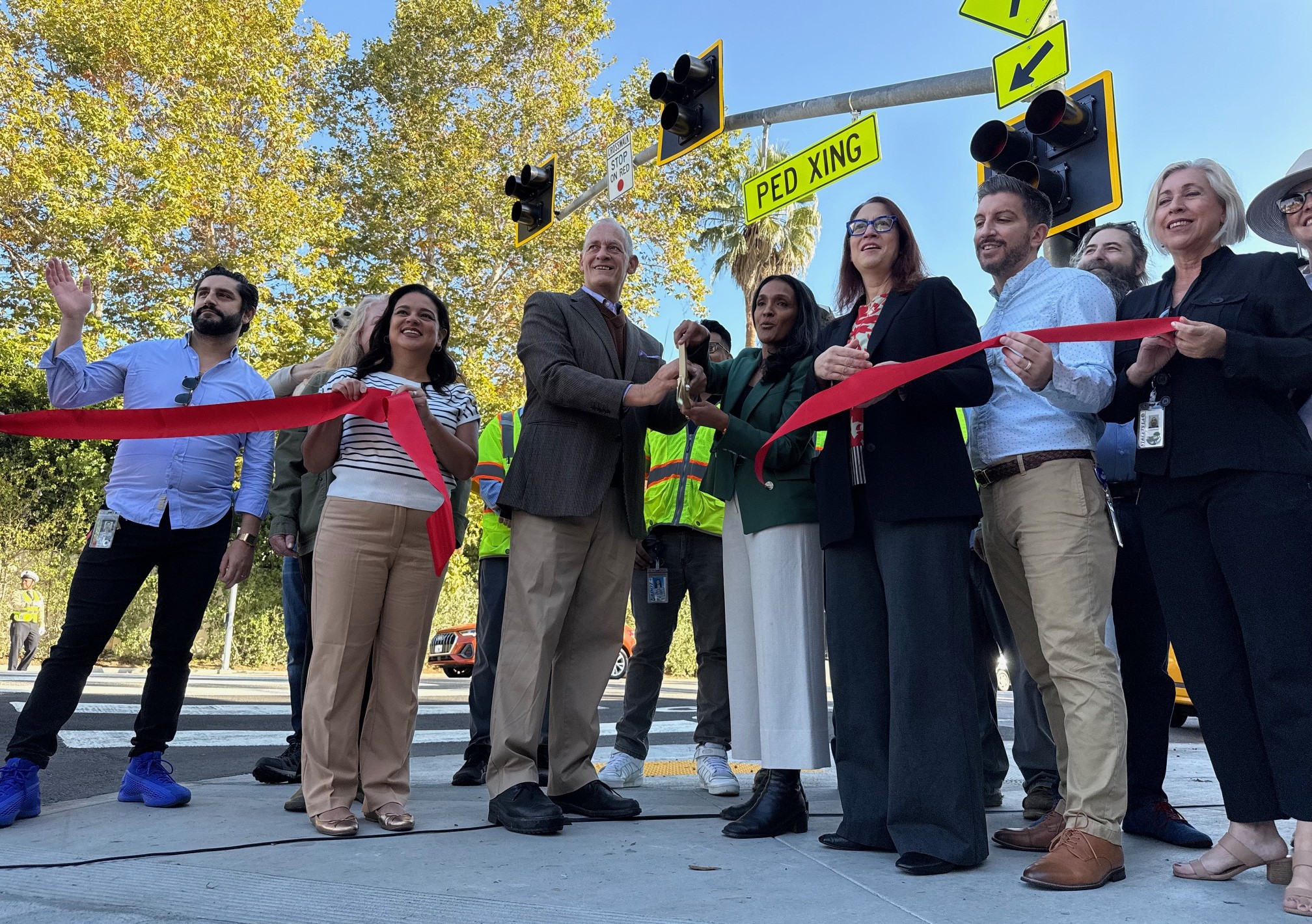
The U.S. Census Bureau just released its first-ever report exclusively on walking and biking. Using data from the American Community Survey, the report shows how rates of active transportation vary by age, income, education, race, and the availability of a vehicle. It's a lot more detail than the usual Census data release on how people get to work, which only breaks active commuting down by gender.
The Census report shows that low-income people bike and walk to work the most, hands down. Of those who make less than $10,000 a year, 1.5 percent commute by bike and 8.2 percent walk. In the $25,000-34,999 range, those numbers are halved. Then at the highest earning levels, active commuting rates start to creep back up. The income stats provide more evidence that safe walking and biking infrastructure isn’t mainly the concern of geared-up weekend warriors with expensive bikes.
Looking at education reveals more of a U pattern, with active commuting rates bottoming out in the middle. Out of five educational attainment levels categorized by the Census, people who've completed a graduate or professional degree -- the highest level -- have the highest bike commute rate (0.9 percent) and second-highest walk commute rate (2.7 percent). People who have not completed high school -- the lowest level -- walk to work the most (3.7 percent) and bike to work the second most (0.7 percent).
Compared to education, there's a much clearer linear relationship between vehicle ownership and active commuting. Workers with no available vehicle walked four times more and biked three-and-a-half times more than workers with one available vehicle. Rates of active transportation decline with each additional vehicle.
Also, people who live and work in the same city bike and walk more than those with commutes that cross boundaries -- the best proxy the Census had for commute length.
The racial makeup of active commuters doesn't fit any simple pattern. People who identify with the category “some other race” or "two or more races" bike the most -- 0.8 percent -- and walk the most -- 4.2 percent. Latinos are close behind on biking. Asians walk to work more than Latinos do, and they bike less. Whites bike at the national average rate of 0.6 percent but walk the least of any group. African Americans bike the least -- 0.3 percent -- and walk the national average rate of 2.8 percent.
Active commuting is also most prevalent among young people, with 1 percent of 16-to-24-year-olds biking and 6.8 percent walking to work. Graduated licensing in many states means the youngest of this cohort may not be legally allowed to drive alone yet. But young people are also often the most fit and the most fearless, and they were born into a culture in which active modes were in ascendance and auto-centrism was waning. Youth is also a proxy for other factors like lower incomes and not having children.
Commuters with kids are less likely to bike or walk. The walk commute rate is 1.8 percent among households raising children, versus 2.8 percent for households without kids. For bike commuting, the split is 0.4 percent compared to 0.7 percent. Having kids creates much more complicated travel patterns, with school drop-offs -- sometimes at multiple schools -- not to mention soccer practice, playdates, and bigger grocery trips. While car-free parenting is a growing movement, it has a long way to go.
The Census also breaks bike and walk commute rates down by gender. Women walk to work at about the same rates as men, but only 0.3 percent bike to work, compared with 0.8 percent of men. That’s more or less in line with the overall biking rate. According to the National Household Travel Survey, women make just 24 percent of all bike trips.
Perhaps this is a good moment to point out that the ACS data this report is based on only looks at the journey to work, which accounts for less than 20 percent of all trips. However, that 20 percent consists of a lot of peak-hour travel, which has a big impact on transportation policy decisions.
The ACS data has other limitations as well: It asks how a person "usually" got to work the previous week, and if someone used more than one mode, it asks them to choose only the one that they used for the greatest distance. So if you bike or walk to the train, the Census only records the train trip.
The Census report looked at biking and walking rates by metro area and by city. This matters, since suburban areas tend to have much lower active transportation rates. “For example, 4.1 percent of workers in the city of Minneapolis commuted by bicycle, compared with only 0.9 percent for workers in the Minneapolis-St. Paul-Bloomington, MN-WI, metropolitan area,” writes report author Brian McKenzie. “Similarly, 12.1 percent of District of Columbia workers walked to work, compared with only 3.2 percent of the Washington-Arlington-Alexandria, DC-VA-MD-WV, metro area.”

The Census report, of course, has lots of rankings -- small cities, medium cities, large cities, states, metro areas. Portland and Boston win for biking and walking, respectively. You can pick through the tables if city rankings are your thing. More interestingly, while the West edges out other regions for biking, the Northeast dominates when it comes to walking. Large cities in the Northeast have better than a 10 percent walking mode share. The South comes in last on both biking and walking.
We’ll bring you more nuances from the Census’s first-ever in-depth look at active transportation -- and an exclusive interview with its author, Brian McKenzie -- on the next episode of the Talking Headways podcast.







